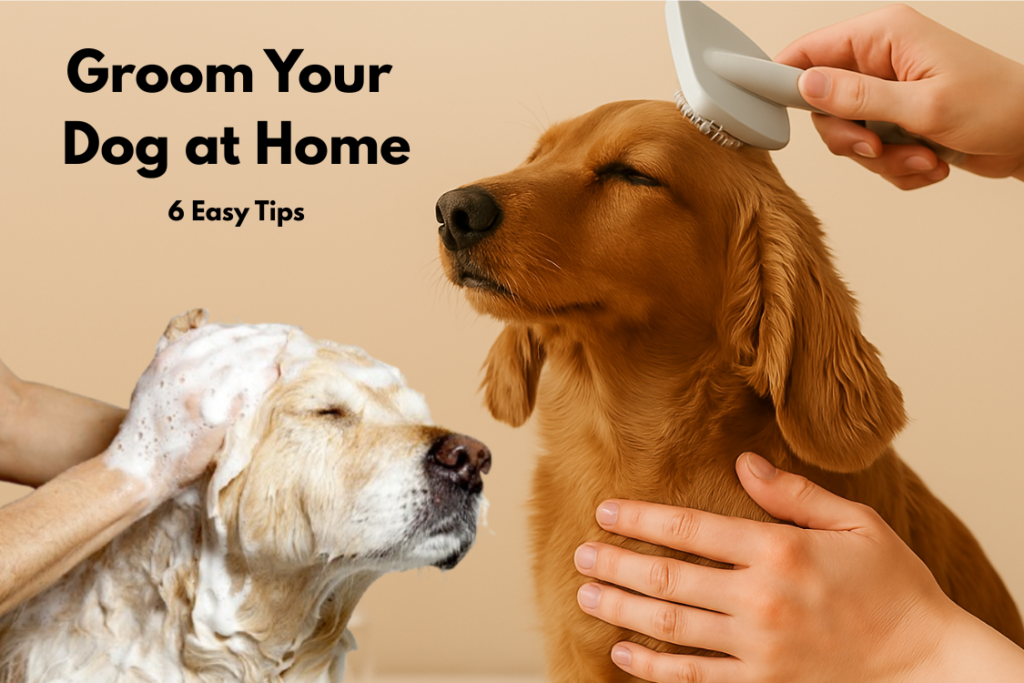Grooming your dog at home is a great way to keep them healthy and looking their best while saving money on expensive trips to the groomer. Regular grooming not only keeps your dog looking cute but also helps you spot health issues like skin conditions, parasites, or ear infections. It also prevents problems like matting, overgrown nails, and dental disease.
With the right techniques, you can master the basics of at-home grooming, ensuring a stress-free experience for both you and your pup. This will not only save you money on professional grooming but also help strengthen your relationship with your dog.
Essential Grooming Tools for At-Home Care
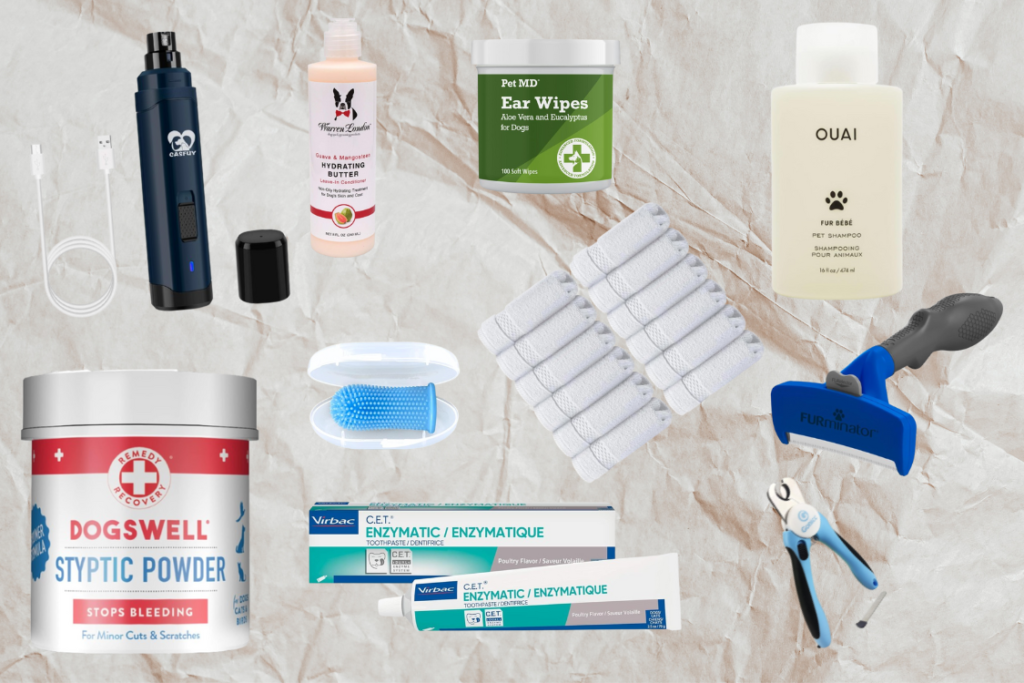
Before you begin, it’s important to have the right grooming tools on hand. Depending on your dog’s breed, size, and coat type, your toolkit will differ, but there are some basic essentials you’ll need to start:
- Nail Clippers or Nail grinder – To keep their nails trimmed.
- Dog Brush – The type of brush will depend on your dog’s coat type (slicker brush, bristle brush, de-shedding tool, etc.).
- Shampoo and Conditioner – Choose a dog-safe, gentle shampoo and conditioner.
- Cotton Balls or Washcloth – For cleaning your dog’s eyes and ears.
- Toothbrush and Toothpaste – Specifically for dogs.
- Styptic Powder – In case you accidentally cut the quick during nail trimming.
Make sure to check with your vet or groomer about any breed-specific grooming tools your dog may need.
1.Brushing Your Dog’s Coat

Brushing is an important task that should be done regularly, depending on your dog’s coat type. Whether you have a short-haired or long-haired dog, brushing will help remove dirt, prevent matting, and distribute natural oils to keep their coat shiny and healthy. It’s also an ideal time to check for fleas, ticks, or signs of skin irritation.
Choosing the Right Brush:
- Short-Coated Dogs: A rubber-bristled brush or a de-shedding tool is ideal for short-haired dogs. These tools help remove loose hair and distribute skin oils.
- Long-Coated Dogs: Slicker brushes or wide-toothed combs are best for long-haired breeds to prevent tangles and mats.
- Curly-Coated Dogs: A steel comb or de-shedding tool can help detangle curls and remove loose fur.
No matter the coat type, brushing also provides an excellent opportunity to examine your dog’s skin and check for any unusual bumps or skin irritation.
2.Bathing Your Dog

Bathing is essential for keeping your dog clean, but it’s important not to overdo it. Bathing your dog too frequently can dry out their skin and coat, as it strips away essential oils. Typically, dogs should be bathed every 4 to 6 weeks, depending on their coat type, activity level, and whether they have a tendency to get dirty.
Bathing Tips:
- Use Dog-Specific Shampoo: Always use a gentle, dog-formulated shampoo. Avoid using human shampoo as it can irritate your dog’s skin.
- Keep Water Lukewarm: Dogs are more sensitive to temperature extremes, so make sure the water is warm but not hot.
- Avoid the Eyes and Ears: Be cautious not to get shampoo or water in your dog’s eyes or ears. Use a damp washcloth to gently wipe their face.
After the bath, gently towel-dry your dog to remove excess water. If your dog enjoys the blow dryer, use it on a low, cool setting to dry their coat. Always keep the dryer at a safe distance from their skin.
3.Nail Trimming
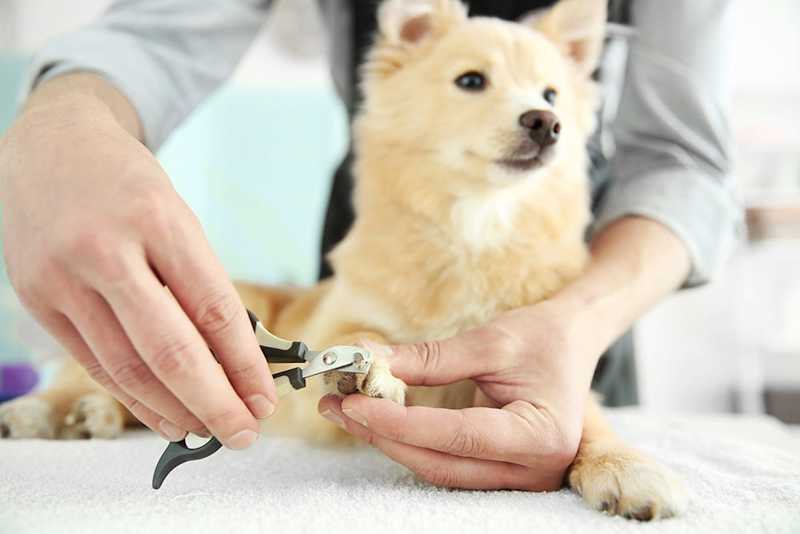
Trimming your dog’s nails is crucial for their comfort and mobility. Overgrown nails can cause pain, affect walking, and even lead to nail injury or nail infection. Regular trimming ensures that your dog’s paws stay healthy.
Tips for Nail Care:
- Use Proper Nail Clippers: Dog-specific clippers or a nail grinder are the best tools for nail trimming.
- Be Cautious of the Quick: The quick is the sensitive part of the nail that contains blood vessels. If you’re trimming white nails, you can see the quick and avoid cutting it. With dark nails, trim in small increments until you see the quick.
- Take Your Time: When learning how to trim your dog’s nails safely at home, patience is key—especially if your pup gets nervous. Start slow by clipping just a nail or two at a time, and be sure to reward them with praise and treats. This helps build a calm, positive experience and makes future nail trims much easier.
If you accidentally cut the quick and cause bleeding, styptic powder can help stop the bleeding.
4.Ear and Eye Care
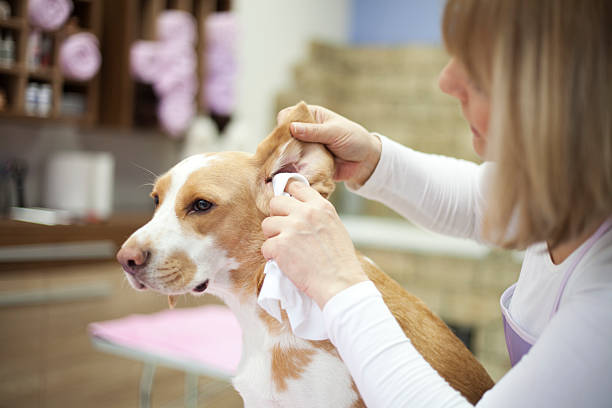
Keeping your dog’s ears and eyes clean is essential for preventing infections. Dogs with floppy ears are more prone to ear infections, so it’s important to regularly check and clean their ears.
Ear Care:
- Clean Only the Outer Part of the Ear: Use a damp cotton ball or cloth to wipe the outer part of the ear. Never insert anything into the ear canal.
- Look for Signs of Infection: If your dog’s ears are red, swollen, or have a foul odor, it may indicate an infection that needs veterinary attention.
Eye Care:
- Wipe Away Discharge: Use a damp cotton ball or washcloth to gently wipe away any eye discharge. Avoid touching the eyeball with the cloth.
- Look for Irritation: If your dog’s eyes appear red or watery, or if they’re excessively pawing at their eyes, this could be a sign of irritation or infection that requires attention.
5.Teeth Brushing
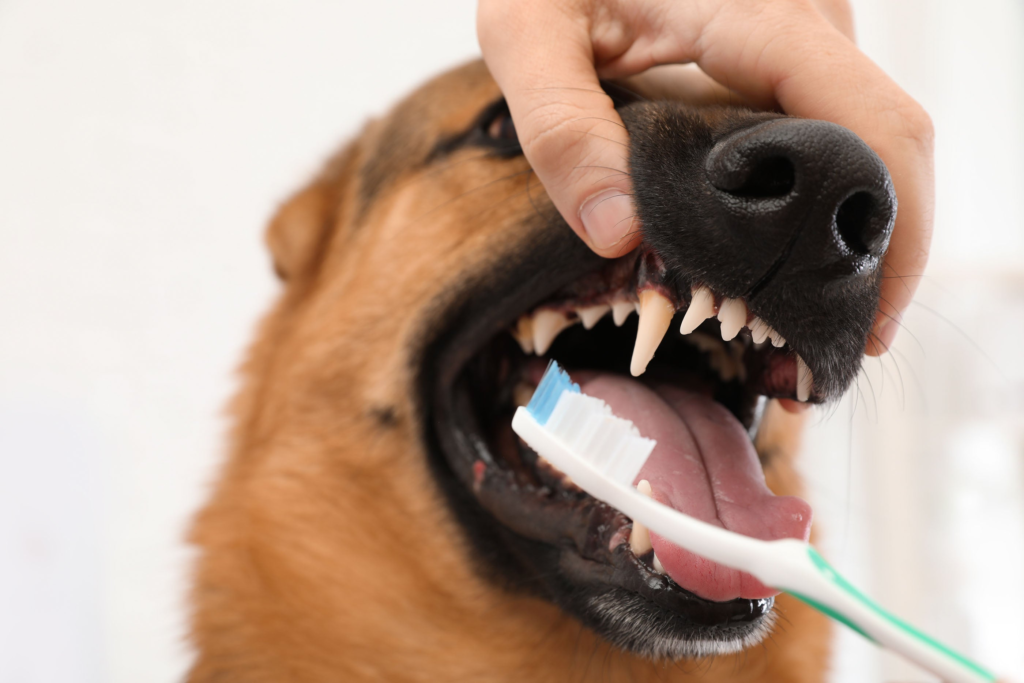
Maintaining good dental hygiene is just as important for dogs as it is for humans. Brushing your dog’s teeth helps prevent plaque buildup, gum disease, and bad breath.
How to Brush Your Dog’s Teeth:
- Use Dog-Specific Toothpaste: Never use human toothpaste, as it contains harmful ingredients for dogs. Use pet toothpaste, which comes in dog-friendly flavors like poultry or peanut butter.
- Use a Soft Dog Toothbrush: Brush gently, especially if your dog is new to the process. Start by introducing your dog to the toothpaste and brush gradually.
- Aim for Regular Brushing: Ideally, brush your dog’s teeth at least two to three times a week, although daily brushing is best to prevent tartar buildup.
Dental chews and toys can also help reduce plaque, but they should not replace regular brushing.
6.Paw and Pad Care
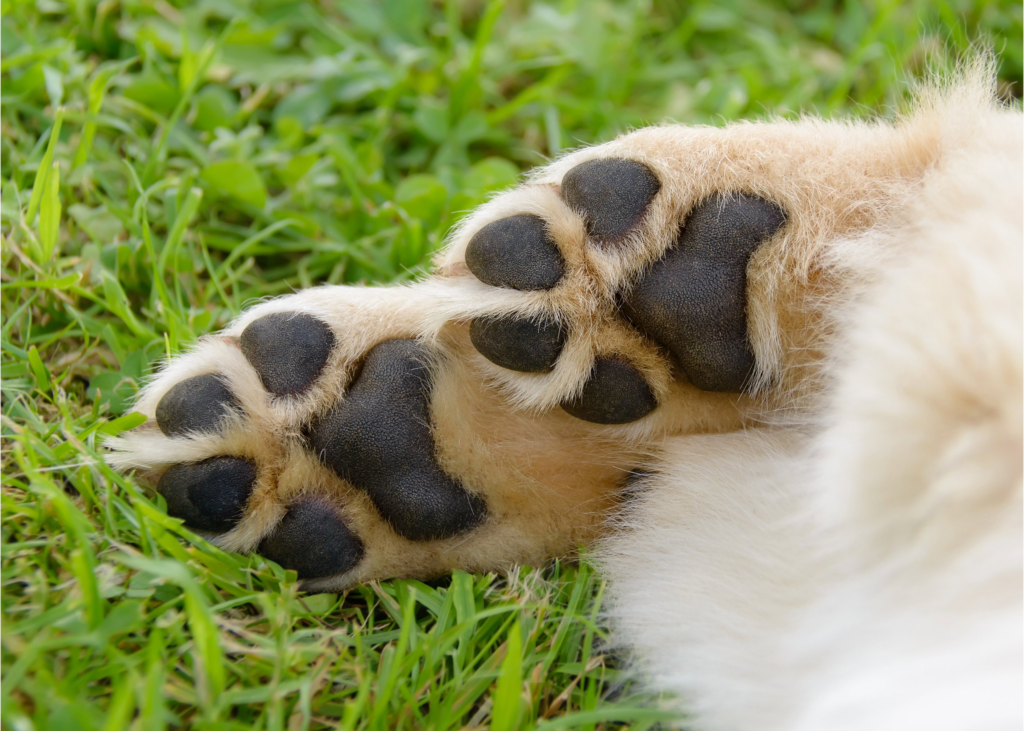
Paw care is often overlooked but is an essential part of grooming. Dogs paws can become dry, cracked, or injured from walking on rough surfaces or during extreme weather conditions. Regularly check your dog’s paw pads to ensure they’re in good condition.
Paw Care Tips:
Check for Injuries: After walks, check your dog’s paws for any cuts, debris, or injuries. Be sure to clean them if necessary.
Trim Excess Hair: Some dogs grow excess hair between their toes that can cause discomfort or matting. Use blunt-end scissors or a small clipper to trim this hair carefully.
Moisturize Paw Pads: In cold weather, dogs’ paw pads can crack and become sore. Apply a pet-safe paw balm or moisturizer to keep their pads soft.
How Often Should You Groom Your Dog?

Grooming frequency varies greatly by breed and coat type. For instance, short-haired breeds like Beagles may only need brushing once a week, while long-haired breeds like Shih Tzus require daily attention to prevent tangles and matting. Dogs with curly coats or double coats often fall somewhere in between.
Tip: For a detailed grooming routine, check out our full guide on grooming frequency by dog breed.
Keeping Your Dog Fresh and Healthy

Grooming your dog at home can be a rewarding experience that not only keeps your dog looking great but also helps to maintain their overall health. By following these steps and incorporating them into your regular routine, you can save money on professional grooming and ensure that your pup stays fresh and healthy all year round.
Remember, grooming isn’t just about keeping your dog looking good – it’s an essential part of their health and well-being. Whether you’re brushing their coat, trimming their nails, or cleaning their ears, your dog will appreciate the care and attention you give them. So grab your grooming tools and get started – your dog will thank you for it!

